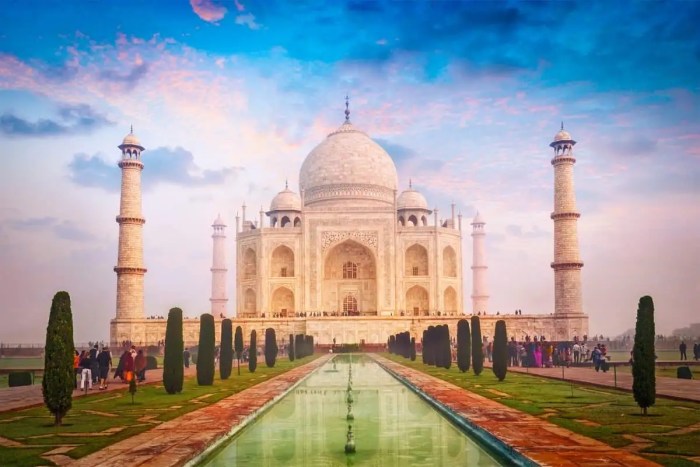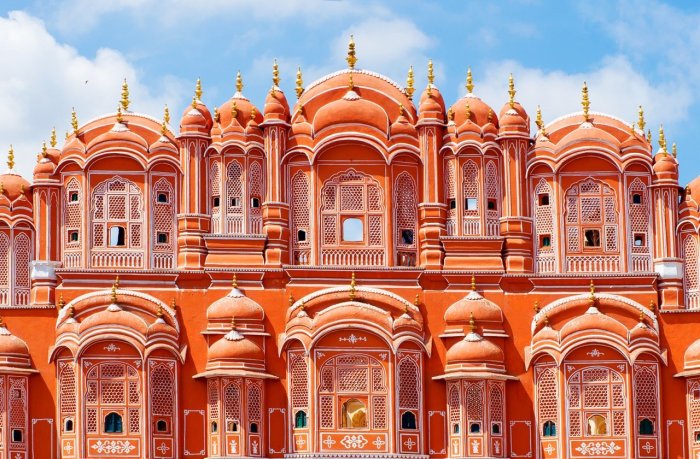UNESCO World Heritage Sites are cultural and natural landmarks that hold exceptional universal value and are protected by the international community. These sites encompass a wide range of wonders, from iconic monuments to pristine wilderness areas, each with its own unique story to tell.
UNESCO’s rigorous selection criteria ensure that only the most significant and well-preserved sites are inscribed on the World Heritage List. These criteria include historical, cultural, architectural, and natural significance, as well as the site’s integrity and authenticity.
Cultural Heritage Sites

UNESCO World Heritage Sites are cultural and natural landmarks of outstanding universal value that are recognized by the United Nations Educational, Scientific, and Cultural Organization (UNESCO). These sites are protected and preserved for future generations because of their historical, cultural, scientific, or other forms of significance.
The criteria for selecting cultural heritage sites are based on the site’s:
- Outstanding universal value
- Integrity and authenticity
- Management and protection plans
- Community involvement
Iconic Cultural Heritage Sites
Some of the most iconic cultural heritage sites include:
- The Great Wall of China
- The Taj Mahal
- The Colosseum
- The Pyramids of Giza
- The Statue of Liberty
These sites are all symbols of human achievement and creativity, and they continue to inspire and awe people from all over the world.
Natural Heritage Sites

Natural Heritage Sites, designated by UNESCO, are globally significant ecosystems that showcase the planet’s remarkable biodiversity and geological formations. Preserving these sites is vital for conserving Earth’s irreplaceable natural treasures and ensuring their protection for future generations.
Exploring UNESCO World Heritage Sites is an enriching experience for families. These sites, renowned for their cultural and natural significance, offer a glimpse into history, art, and the wonders of nature. From ancient ruins to breathtaking landscapes, they provide a perfect backdrop for unforgettable family moments.
Discover the best family vacation spots that feature UNESCO World Heritage Sites, creating memories that will last a lifetime.
To qualify as a Natural Heritage Site, a site must meet at least one of four criteria:
- Representing outstanding universal value, containing exceptional natural beauty or scientific importance.
- Exemplifying major stages of Earth’s history, including ongoing geological processes and the evolution of life.
- Providing a unique habitat for biodiversity, including endangered species and unique ecosystems.
- Containing outstanding examples of ecological processes that are vital for maintaining the planet’s ecological balance.
Examples of Remarkable Natural Heritage Sites, UNESCO World Heritage Sites
UNESCO has designated over 250 Natural Heritage Sites worldwide, each offering unique ecological and geological wonders.
- The Great Barrier Reef, Australia: The world’s largest coral reef ecosystem, teeming with an astounding array of marine life.
- Yosemite National Park, USA: Home to towering granite cliffs, giant sequoia trees, and cascading waterfalls, showcasing the grandeur of nature.
- Serengeti National Park, Tanzania: A vast savanna renowned for its annual wildebeest migration, one of the greatest wildlife spectacles on Earth.
- Galapagos Islands, Ecuador: A unique archipelago where Charles Darwin’s research inspired his theory of evolution.
- Grand Canyon, USA: A geological masterpiece carved by the Colorado River over millions of years, exposing layers of Earth’s history.
Mixed Heritage Sites

Mixed Heritage Sites are cultural and natural sites that have been designated as having both cultural and natural significance by the United Nations Educational, Scientific and Cultural Organization (UNESCO). These sites are unique in that they combine both cultural and natural heritage, making them important for both their cultural and environmental value.
Mixed Heritage Sites are selected based on a set of criteria established by UNESCO. These criteria include:
- The site must contain both cultural and natural elements that are of outstanding universal value.
- The cultural and natural elements must be inextricably linked to each other, meaning that they cannot be separated without losing their significance.
- The site must be managed in a way that ensures the protection and preservation of both the cultural and natural elements.
There are many examples of Mixed Heritage Sites around the world. Some of the most famous include:
- The Great Barrier Reef, Australia: This site is home to a diverse array of marine life, as well as a number of important cultural sites, including Aboriginal rock art.
- The Serengeti National Park, Tanzania: This park is home to a large population of wildlife, including lions, elephants, and wildebeest. It is also home to a number of important cultural sites, including the Olduvai Gorge, where some of the earliest evidence of human life has been found.
- The Machu Picchu Historical Sanctuary, Peru: This site is home to the ruins of the ancient Inca city of Machu Picchu. It is also home to a number of important natural features, including the Andes Mountains and the Amazon rainforest.
Mixed Heritage Sites are important because they represent the interconnectedness of culture and nature. They are a reminder that our cultural heritage is often inextricably linked to our natural heritage, and that we must protect both in order to ensure the well-being of future generations.
Preservation and Management
Preserving and managing UNESCO World Heritage Sites pose significant challenges due to their unique and irreplaceable value. However, with careful planning and collaboration, these challenges can be overcome to ensure the protection and sustainability of these sites for future generations.
Challenges in Preservation
Preserving UNESCO World Heritage Sites requires addressing various challenges, including:
– Natural disasters: Sites can be vulnerable to earthquakes, floods, hurricanes, and other natural disasters that can cause severe damage or destruction.
– Climate change: Rising sea levels, increased temperatures, and changes in precipitation patterns can impact coastal and inland sites, threatening their integrity.
– Pollution: Air and water pollution can damage structures, erode cultural landscapes, and disrupt ecosystems.
– Over-tourism: Uncontrolled tourism can lead to overcrowding, wear and tear on infrastructure, and environmental degradation.
Preservation Strategies
To effectively preserve UNESCO World Heritage Sites, several strategies are employed:
– Conservation plans: Comprehensive conservation plans are developed to guide preservation efforts, addressing specific threats and outlining measures to mitigate them.
– Monitoring and maintenance: Regular monitoring and maintenance are essential to identify potential risks and implement timely interventions to prevent damage.
– Restoration and rehabilitation: In cases where damage has occurred, restoration and rehabilitation projects aim to restore the site’s integrity while preserving its authenticity.
– Education and awareness: Raising awareness about the importance of these sites and promoting responsible tourism can help reduce their vulnerability to human-induced threats.
Role of Local Communities and International Cooperation
Local communities play a crucial role in preserving UNESCO World Heritage Sites, as they often possess valuable knowledge and cultural practices related to the site’s significance. Their involvement in management and decision-making processes is essential for ensuring the sustainability of the site.
International cooperation is also vital for preserving UNESCO World Heritage Sites, particularly in cases where threats transcend national boundaries. Collaboration between countries can facilitate the sharing of expertise, resources, and funding to address shared challenges.
Best Practices and Case Studies
Numerous best practices and case studies demonstrate the effectiveness of various preservation approaches:
– The Great Barrier Reef Marine Park Authority in Australia has implemented a comprehensive management plan that includes zoning, monitoring, and restoration efforts to protect the reef’s biodiversity and resilience.
– The Historic City of Dubrovnik in Croatia has established a strict building code and implemented a tourism management plan to preserve its architectural integrity and prevent over-tourism.
– The Angkor Archaeological Park in Cambodia has partnered with local communities to develop a sustainable tourism model that generates revenue for conservation efforts while protecting the site’s cultural and environmental heritage.
Tourism and Sustainability: UNESCO World Heritage Sites

Tourism plays a significant role in the preservation and promotion of UNESCO World Heritage Sites. However, it also poses challenges to the sustainability of these sites.
Environmental Impact
Mass tourism can lead to environmental degradation, including pollution, habitat loss, and damage to natural resources. To minimize these impacts, sustainable tourism practices must be implemented.
Explore UNESCO World Heritage Sites, extraordinary cultural and natural landmarks recognized for their universal value. For a unique vacation experience, consider incorporating extreme sports into your itinerary. From paragliding over ancient ruins to mountain biking through lush rainforests, extreme sports vacations offer an exhilarating way to discover these treasured destinations while immersing yourself in adventure.
After your adrenaline-fueled escapades, return to the tranquility of these UNESCO World Heritage Sites, appreciating their historical significance and timeless beauty.
Cultural Impact
Tourism can also have negative cultural impacts, such as the commodification of local traditions and the displacement of indigenous communities. Sustainable tourism practices should respect and preserve local cultures.
Economic Benefits
Tourism can provide significant economic benefits to local communities. However, it is important to ensure that these benefits are shared equitably and that they do not compromise the integrity of the World Heritage Sites.
Visiting UNESCO World Heritage Sites is a must for any discerning traveler. But to truly make the most of your experience, it’s worth considering some luxury travel tips. From booking a private tour to staying in a nearby five-star hotel, there are many ways to elevate your trip.
By following these tips, you can ensure that your visit to these incredible sites is both memorable and enjoyable.
Successful Tourism Models
Several successful tourism models balance conservation with economic benefits. These models include:
- Ecotourism: Tourism that focuses on preserving natural and cultural heritage while providing economic benefits to local communities.
- Community-based tourism: Tourism that involves local communities in the planning and operation of tourism activities, ensuring that they benefit directly from tourism.
- Low-impact tourism: Tourism that minimizes environmental and cultural impacts by using sustainable practices, such as reducing waste and using renewable energy sources.
Final Conclusion

Preserving UNESCO World Heritage Sites is a global responsibility. These sites are not only valuable for their beauty and cultural significance, but they also provide important insights into our past and help us to understand the diversity of our world. By working together, we can ensure that these treasures are protected for future generations to enjoy.
Query Resolution
What is the difference between a cultural and natural World Heritage Site?
Cultural World Heritage Sites are landmarks or structures that are of great historical, cultural, or architectural significance. Natural World Heritage Sites are areas of outstanding natural beauty or ecological importance.
How many World Heritage Sites are there?
As of 2023, there are 1,154 World Heritage Sites in 167 countries.
What is the most visited World Heritage Site?
The most visited World Heritage Site is the Great Wall of China, which receives over 10 million visitors each year.